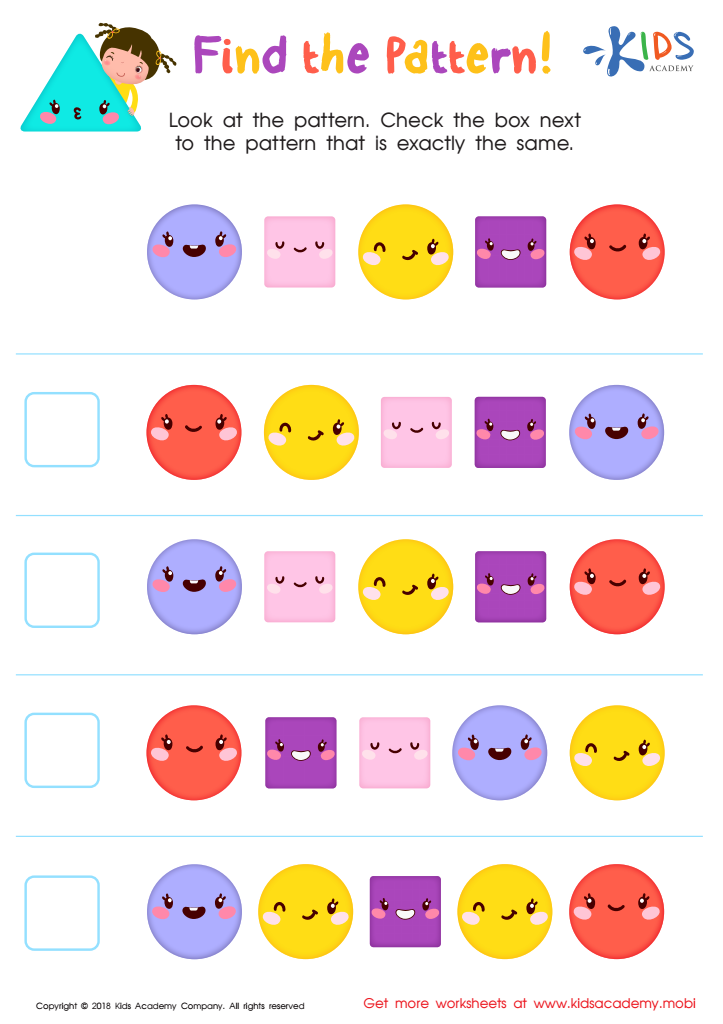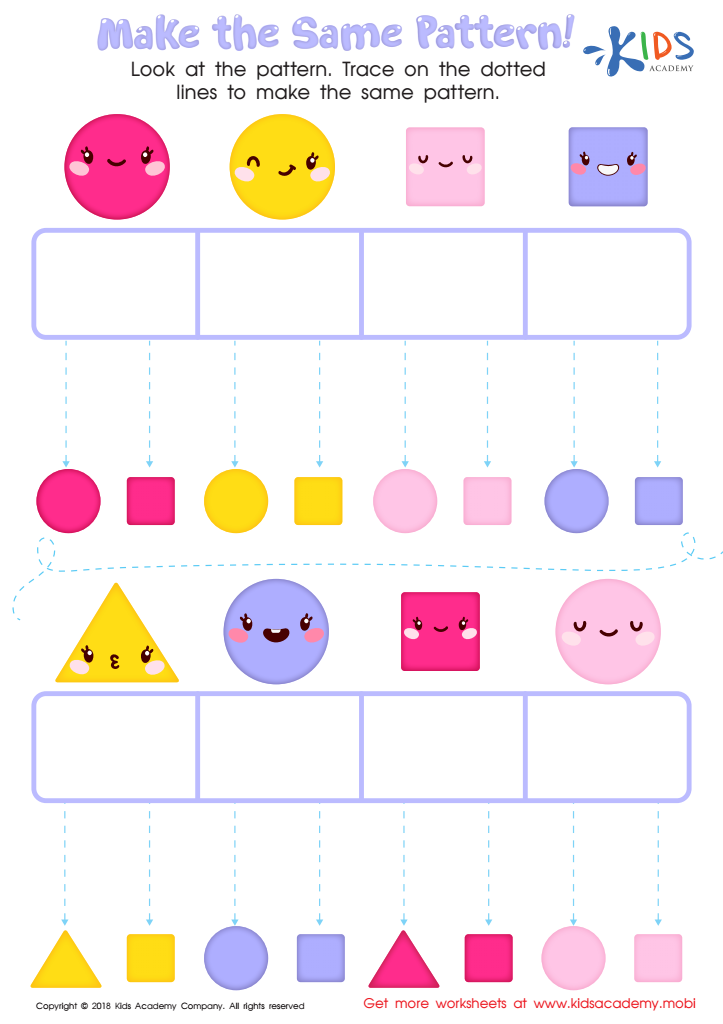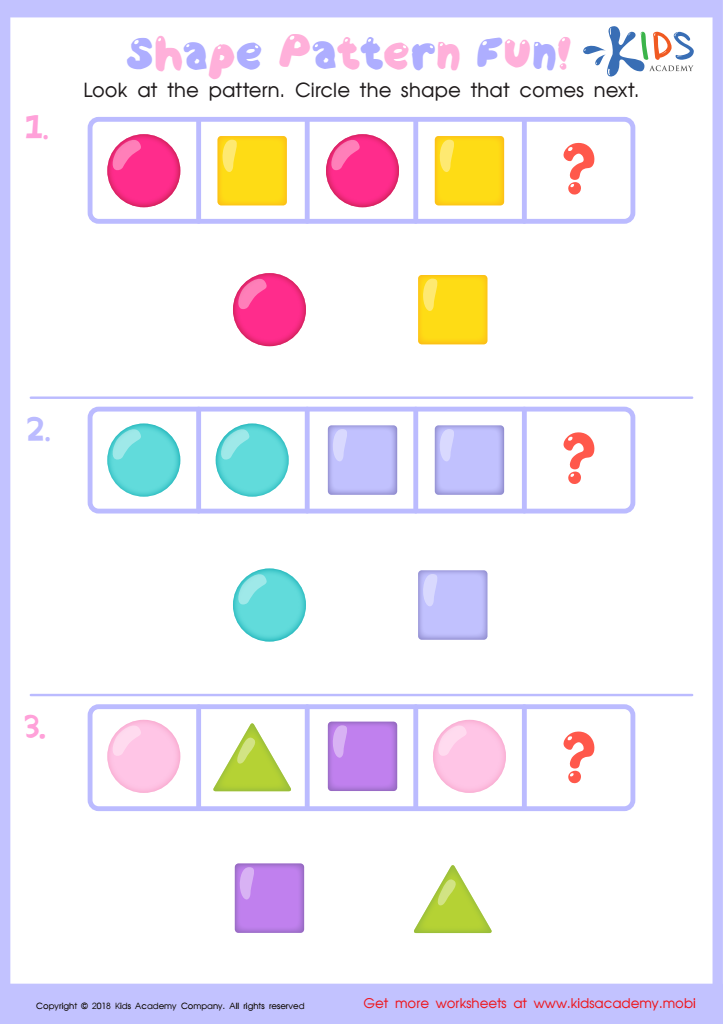Pattern recognition Normal Geometry Worksheets for 3-Year-Olds
3 filtered results
-
From - To
Introduce your 3-year-old to the wonderful world of geometry with our Pattern Recognition Normal Geometry Worksheets. Specifically designed to captivate young minds, these worksheets make learning shapes, sequences, and spatial relationships a delightful adventure. Our interactive exercises help develop critical thinking, early math skills, and the ability to identify and complete patterns. Fun and educational, they offer the perfect blend of play and learning suitable for preschoolers. Let your little ones explore the foundational concepts of geometry effortlessly with engaging visuals and age-appropriate challenges. Transform your home learning into an exciting journey with our expertly crafted worksheets!


Find the Pattern Worksheet


Make the Same Pattern Worksheet


Shape Pattern Fun Worksheet
Pattern recognition in early childhood is essential for developing cognitive skills that are foundational for later learning and problem-solving abilities. When parents or teachers engage 3-year-olds in recognizing patterns and basic geometry, they pave the way for several critical developmental milestones.
Firstly, recognizing patterns sharpens observational skills, which are vital for understanding and engaging with the world around them. For instance, identifying alternating colors or shapes helps kids notice the regularities and irregularities in their environment, promoting attention to detail.
Secondly, patterns and geometry work as the precursors to mathematical thinking. By learning to identify and predict sequences, children develop early math skills, such as counting and categorizing. This understanding builds a solid platform for more complex mathematical concepts they will encounter in school, such as sequences, algebra, and geometry.
Additionally, these exercises boost logical thinking and problem-solving skills. When children work with puzzles or sorting tasks involving shapes, they learn to strategize and think critically about how pieces fit together. These activities also foster creativity, as children experiment with different ways to construct patterns.
Moreover, engaging children in these activities improves fine motor skills. Tasks that involve manipulating objects to create patterns or solve puzzles enhance hand-eye coordination and dexterity.
Therefore, emphasizing pattern recognition and basic geometry isn't just about preparing children for future academics; it's about nurturing a well-rounded skill set that supports their overall cognitive, social, and physical development.
 Assign to My Students
Assign to My Students






























